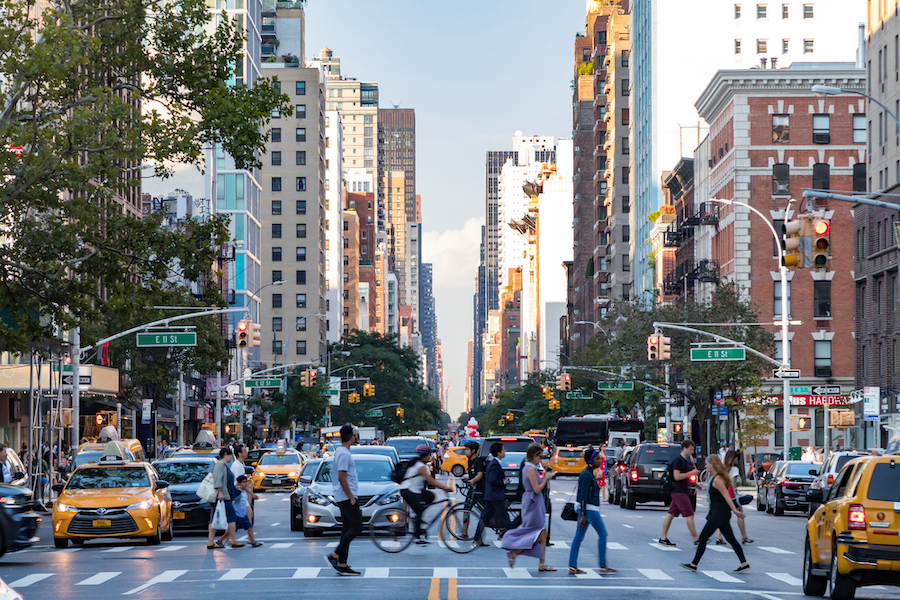Insight Focus
- As countries become more urban, they often consume more sugar.
- This is likely because they have increased access to sugar and higher disposable incomes.
- However, there are some caveats that mean this trend is not watertight…
The Link Between Sugar Consumption Growth and Urbanisation
We broadly assume that, as countries become more urban, they consume more sugar. This is because access to areas where sugar consumption is more common increases, such as restaurants, bars and theatres. The same goes for the average disposable income and the prevalence convenience foods, which often contain more sugar.
The below chart reveals that this is not a perfect correlation, but it’s certainly present, especially during the earlier stages of urbanisation, between 10 and 55%.
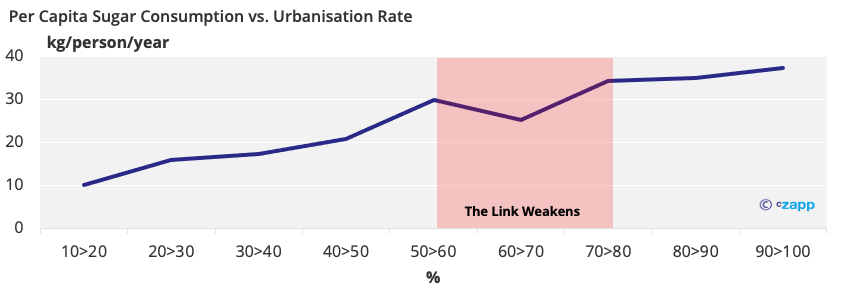
One Clear Caveat: Urbanisation is More Impactful in Low-Income Nations
Less urbanised nations tend to have a lower average income.
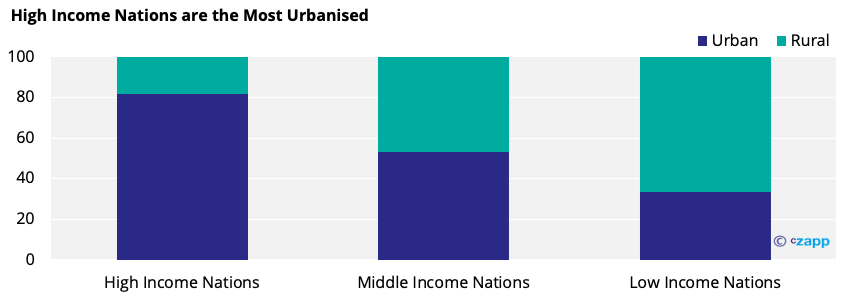
Also, the income disparity between the rural and urban population in low-income nations is far larger than that of middle- and high-income nations.
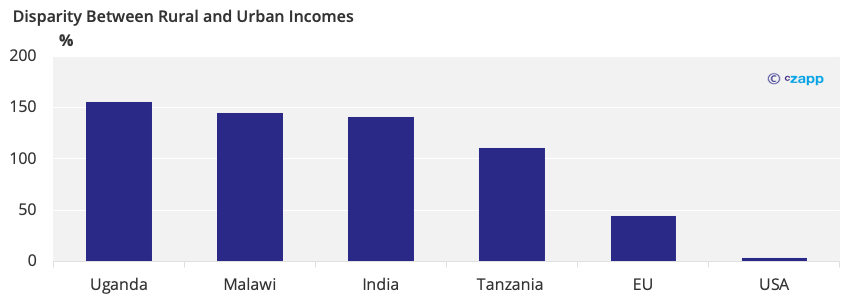
So, as lower income nations become more urbanised, the spike on consumer spending may appear more impactful. This is because wealthier nations already have solid infrastructure, which enables rural residents to visit nearby settlements that offer a broader variety of food and drinks.
Another Clear Caveat: Consumer Tastes for Sugar Vary Geographically
A country’s urbanisation rate can help illustrate the level of access it has to sugar, but that doesn’t mean it’ll consume what it has access to.
For instance, Japan’s sugar consumption is very low (15 kg/person/year) for such an urbanised country (92%). This is partly because alterative sweeteners occupy a larger-than-usual share of the market but, also, the country’s diet is traditionally low in sugar.
Contrastingly, the Netherlands, which is equally urbanised (92%), has much higher consumption (48 kg/person/year), with a significantly smaller sweetener market and stronger appetite for confectionary.

Beyond this, if we look at Chile, we see that, between 2010 and 2020, its sugar consumption decreased whilst urbanisation increased. During this period, the government implemented sugar taxes and added labels to foods that contained a lot of sugar in attempt to combat the country’s high sugar consumption.
Chile therefore reveals that the impact of urbanisation can be less significant when consumers grow more aware of the link between excessive sugar consumption and poor health.
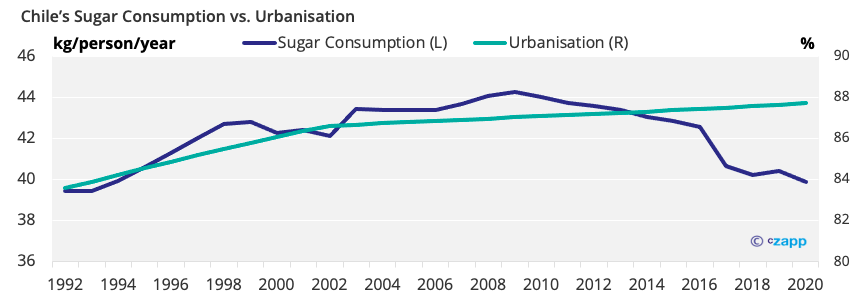
Other Considerations
Sugar-producing nations, such as Guyana and Nicaragua, tend to consume more sugar on a per capita basis as sugar is more readily available and often cheaper

And, of course, sugar consumption cannot grow indefinitely. After all, there’s only so much sugar a human can safely consume in one year, so growth can often slow when it hits ~30kg on a per capita basis.
Concluding Thoughts
- As countries become more urban, they often consume more sugar.
- This is mainly because they have increased access to sugar and a higher disposable income.
- This link is less prevalent in countries that have traditionally low-sugar diets, such as Japan.
- It also seems less prevalent in countries where consumers are more receptive to government measures that target reduced sugar consumption.
- And, finally, consumption is often higher in sugar-producing countries, regardless of their level of development, as it’s often cheaper and easier to access.

Other Insights That May Be of Interest…
Czapp’s Sugar Consumption Case Studies
Explainers That May Be of Interest…
